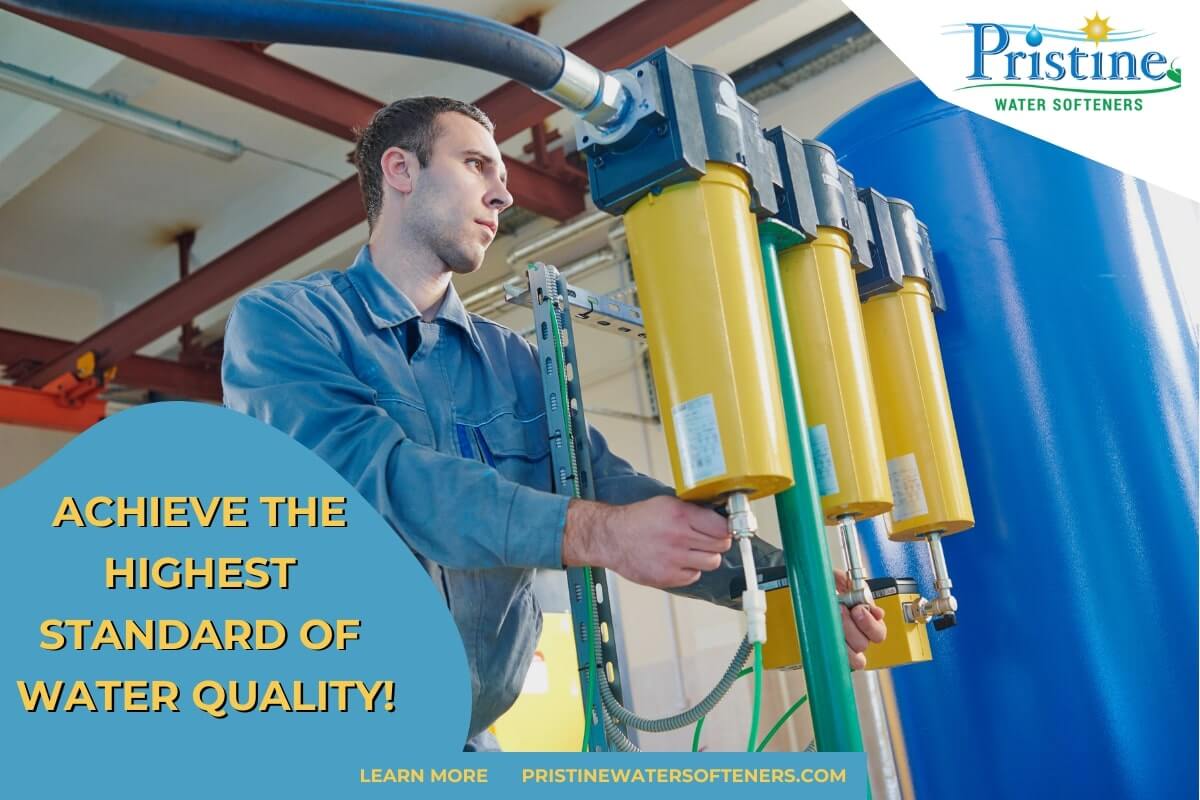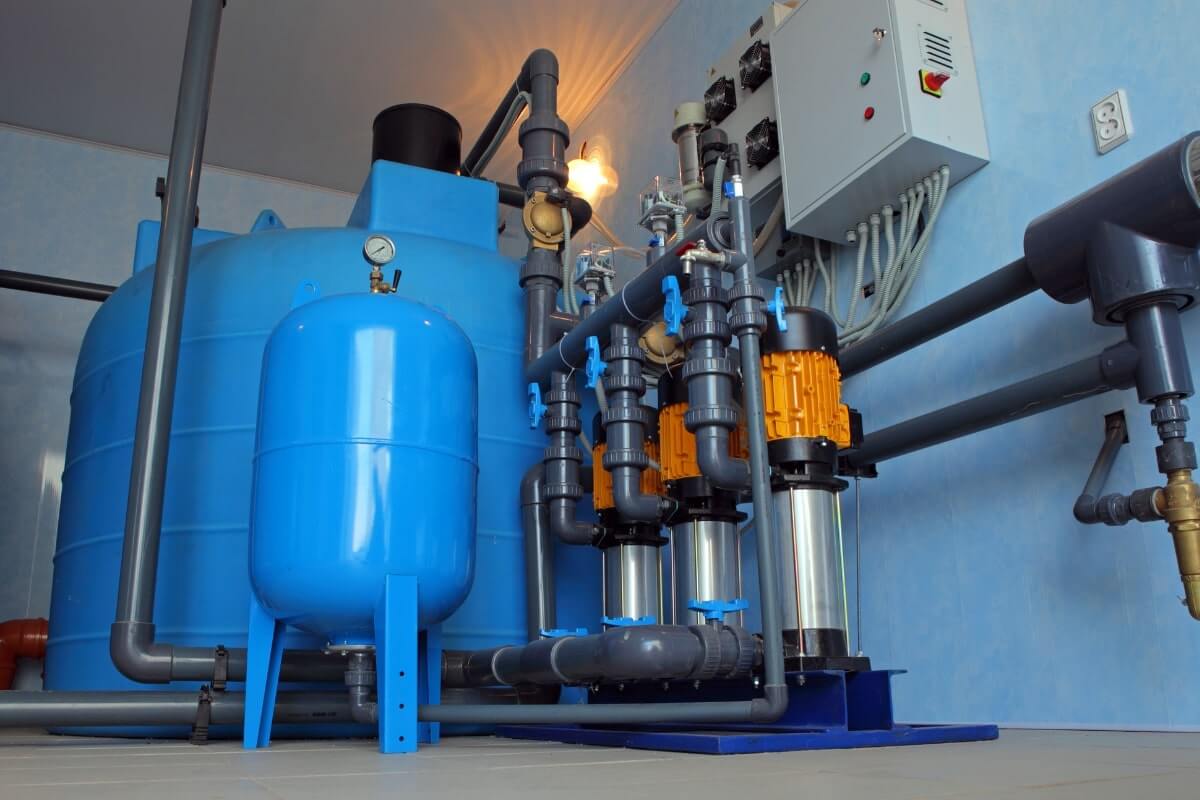Purification of water plants plays a crucial role in supplying safe and clean drinking water. But have you ever thought about what happens inside a water purification plant? How does water from lakes, rivers, or other underground sources transform into the crystal-clear water that we get through our faucets? This transformation involves several complicated processes, many of which require different kinds of filters. Let’s take a look at the water purification plant systems and discover the various filters used to ensure that we drink safe water.
What is a Water Purification Plant?
Before we discuss the intricacies of filters, we must define a water purification plant. A water purification plant is an establishment that purifies water to ensure it is suitable for human consumption. The water is subjected to several stages of treatment, such as filtering, which removes contaminants, pathogens, and other hazardous substances.
The Importance of Filters in Water Purification Plant
Filters are essential components of a water purification plant. They help eliminate physical, chemical, and biological contaminants from water. Different kinds of filters are employed at various stages of the water treatment process to achieve the desired level of purification. Let’s take a look at some of the most popular types of filters used in water purification plants.
1. Sand Filters
Sand filters are among the oldest and most commonly utilized filtration methods used in a water purification plant. They use layers of sand to eliminate suspended particles from water. As water moves through the layers of sand, particles are trapped, resulting in clearer water.
How Sand Filters Work:
- Water runs through a bed of sand: Raw water is introduced on the uppermost part of the filter and can flow downwards through the layers of sand.
- Suspended particles are entrapped inside the sand beds: The larger particles are removed first, then followed by gradually smaller ones as the water gets deeper into the sand.
- Clean water flows out of the bottom: The purified water is then collected at the bottom and then transferred to the next stage of purification.
Benefits:
- Simple and Efficient: Sand filters are simple to operate and maintain, which makes them appropriate for large-scale water treatment.
- Low Maintenance: Frequently, backwashing (reversing water flow) is enough to scrub the sand bed and remove the trapped particles.
- Cost-Effective for Large-Scale Projects: Because of their simplicity and effectiveness, sand filters are an economical solution to treat large amounts of water.
2. Activated Carbon Filters
The activated carbon filter is well-known for its capability to eliminate organic substances, chlorine, and other chemical compounds that can affect the flavor and odor of water. In a water purification plant, these filters are crucial for removing impurities and ensuring high water quality. They are made up of activated carbon that is large in area and can absorb many impurities.
How Activated Carbon Filters Work:
- The water flows through an activated carbon: The raw water flows through activated carbon, which usually comes as granules or blocks.
- Impurities are absorbed onto the surface of carbon particles: Chemical compounds like chlorine, organic, and various other chemicals are drawn to and held by carbon.
- Clean water is released from the other side: purified water, now free of unpleasant smells and tastes, leaves the filter.
Benefits:
- Enhances the taste as well as the odor: Carbon filters are activated to eliminate the compounds that can cause unpleasant taste and odor in water.
- Effective in getting rid of organic and chlorine contaminants: They also help reduce harmful organic pollutants and harmful chemicals, which makes the water more safe to drink.
- It can remove metallic elements: Carbon activation can adsorb specific heavy metals, thereby improving the water’s quality.
3. Cartridge Filters
Cartridge filters are flexible and can be utilized for a variety of phases of water purification. They are cylindrical, and they contain an element of filtering that can hold particles of various dimensions. Cartridge filters are typically used to filter out larger particles before the water goes through a more refined filtration.
How Cartridge Filters Work:
- The water can flow through the filter media within the cartridge: Raw water flows into the cartridge and then passes through the filtering media, made from materials like pleated paper polypropylene, polypropylene or various synthetic fibers.
- Particles are held in the filter media: Filter media can capture and hold particles ranging from huge particles to fine sediments, dependent on the filter’s pore size.
- Clean water leaves the cartridge: The filtered water, now completely free of the trapped particles, is released from the cartridge before proceeding to the next stage of treatment.
Benefits:
- Simple to maintain and replace: Cartridge filters are made for simple removal and replacement, and maintenance is easy.
- Available in different sizes of pores: The different cartridges can concentrate on particular particle sizes, making it possible to create custom-made filtration.
- It can be used for both fine and coarse filtering. Cartridge filters can adapt to a variety of filtration requirements, including pre-treatment, polishing, and polishing.
4. Membrane Filters
Membrane filters are employed in water purification processes that are advanced, such as reversing the process of osmosis (RO) as well as ultrafiltration (UF). These filters feature extremely small pores that can eliminate even the smallest particles, such as viruses and bacteria.
How Membrane Filters Work:
- The water is pushed through a semi-permeable membrane: The water is then pressurized and then pushed through the membrane that has tiny pores.
- Only water molecules are allowed to pass through, whereas impurities remain behind: The membrane permits water molecules to pass through, but it blocks larger particles such as bacteria, dissolved salts and viruses.
- Water that is clean and safe to drink can be collected from the opposite part of the membrane: The purified water, which is free of most contaminants, is then pumped into the reservoir to be further treated or distributed.
Benefits:
- Highly efficient in the removal of microorganisms and dissolving solids: Membrane filters grant the highest level of purification, eliminating many kinds of pollutants.
- Produces extremely high-quality water: The water that is treated is typically more premium than the water generated by other methods of filtration.
- Important for desalination and other advanced treatments: Membrane filtration is essential for processes such as desalination, which requires the removal of dissolving salts.
5. Biofilters
Biofilters employ biological processes to eliminate organic matter as well as other contaminants from water. They are made up of biofilm which is a group of microorganisms which reduce impurities as water flows through.
How Biofilters Work:
- The water can flow through a biofilm layer: The raw water is pumped through the biofilter where it comes into contact with the biofilm.
- Biofilm microorganisms break down organic matter and other pollutants. They eat and disintegrate organic pollutants, reducing the total contaminant burden.
- Clean water is collected at the end of the process. The treated water, which has a reduced organic content, is then sorted to be further processed or distributed.
Benefits:
- Effective in decreasing organic content: Biofilters are incredibly efficient in eliminating organic pollutants that can be difficult to remove by other techniques.
- Biofilters are sustainable and environmentally friendly: They utilize natural processes and don’t require chemical additives, which makes them green.
- Could raise the quality of water without the use of chemical additives: Relying on the process of biological degradation, biofilters can boost water quality without the need for more chemicals.
6. Slow Sand Filters
Slow sand filters function similarly to traditional sand filters, however they are operated at a slower rate. This permits the formation of a biofilm over the sand, referred to as the schmutzdecke, which enhances the process of filtration by dissolving organic matter.
How Slow Sand Filters Work:
- The water moves slowly through the sand bed: The raw water is introduced near the top of the filter and flows slowly through the layers of sand.
- The Schmutzdecke layer captures and breaks down impurities: The biological layer that is on the top of the sand bed absorbs and breaks down organic matter and microorganisms.
- Clean water comes out of the bottom: Water, which has significantly lower contaminant levels, gets taken to the bottom.
Benefits:
- Low energy consumption: Slow sand filters work without the requirement of pumps, or even high pressure, which reduces the energy cost.
- Effective in eliminating viruses and bacteria: Combining physical filtering with biological degradation makes slow sand filters efficient against pathogens.
- Needs little maintenance: Aside from cleaning the sand deck, slow filters require minimal maintenance.
7. Ceramic Filters
Ceramic filters are composed of porous ceramic materials that can remove protozoa and bacteria, as well as various pathogens that are present in the water. These filters are commonly utilized in small-scale or household water purification systems, but they are also used in larger water treatment facilities.
How Ceramic Filters Work:
- The water runs through the porous material: Raw water is introduced into the ceramic filter, and it can pass across the small pores of the ceramic.
- Pathogens and particles are encased within the tiny pores: The tiny pores of the ceramic material trap protozoa and bacteria, as well as other harmful substances.
- Clean water flows through: The water filtered is now free of most contaminants and pathogens and can emerge from the opposite side.
Benefits:
- Long-lasting and durable: Ceramic filters can be used and cleaned numerous times, which makes them economically efficient.
- It can be cleaned or reused: Material can be scrubbed to eliminate any trapped contaminants, thus prolonging the life of the filter.
- Effective in removing microorganisms: Ceramic filters are very efficient in eliminating a wide variety of pathogens, making drinking water safe.
8. Ion Exchange Filters
Ion exchange filters can be used to eliminate dissolved ions like magnesium and calcium that cause hardness in water. The filters are made up of resin beads that replace unwanted ions present in the water with benign ones, leading to softened water.
How Ion Exchange Filters Work:
- Water flows through a bed: The water is then introduced to the ion exchanger, and then it can contact those beads.
- Unwanted ions are exchanged for harmless ions in the beads of resin: The resin beads exchange magnesium and calcium ions to potassium or sodium ions, which soften the water.
- The water that has softened is collected: The water treated that is now softened, and with less hardness, is stored for future utilization or to be distributed.
Benefits:
- Highly effective in softening the water: Filters that exchange ions are extremely effective in removing ions that can cause hardness from water.
- Improves the quality of water for a variety of uses: Softened water can be ideal for household appliances as well as plumbing and private usage.
It is possible to regenerate and reuse rechargeable Resin beads using a brine solution, which allows this filter to be utilized several times.

Experience Pristine Water Quality Today!
At Pristine Water Softeners, we are committed to ensuring that you and your family have access to the purest and safest drinking water possible. Understanding the various types of filters used in water purification plants highlights the intricate processes involved in delivering high-quality water right to your faucet. Whether it’s sand filters, activated carbon, or advanced membrane technologies, each filter plays a crucial role in removing contaminants and safeguarding your health.
Ready to experience the benefits of pristine, purified water in your home? Contact us today to learn more about our advanced water purification solutions and how we can help you achieve the highest standard of water quality. Visit our website or give us a call to get started on your journey to cleaner, safer water with Pristine Water Softeners!


